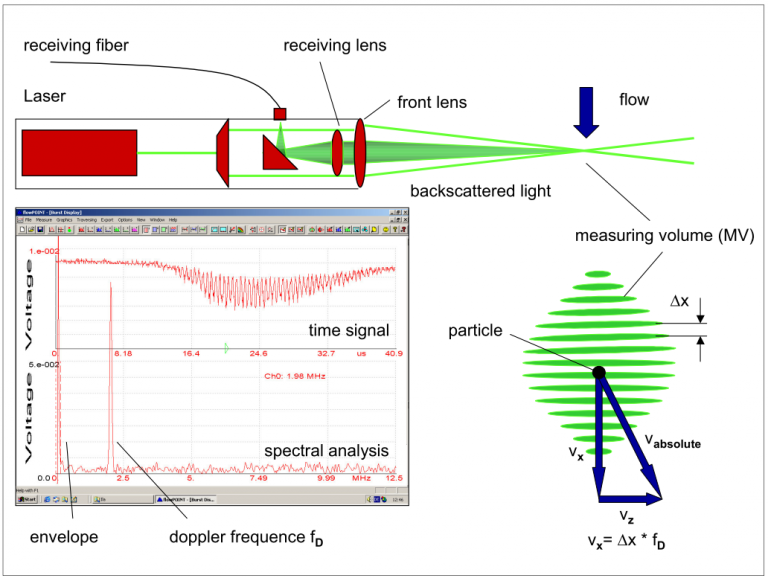
Measuring Principle of Laser Doppler Velocimetry (LDV/ LDA)
Two laser beams intersect each other, generating an overlapping region, which is known as the measurement volume. A pattern of interference fringes is created in the measurement volume, where the distance between the interference fringes is defined by the wavelength of the laser light and the angle between the two laser beams. This interference pattern is crucial for the accuracy and precision of the measurements obtained from the LDV Measurement system.
As a particle moves within the measurement volume, it passes through alternating bright fringes. Consequently, the particle scatters light with a frequency that depends on its velocity. The interaction between the particle and the interference fringes results in a modulated light signal, which carries information about the particle’s velocity. This modulated light, containing the velocity information, is then collected by the system’s optics.
This backscattered light is transformed into a voltage signal by a photodetector, which is specifically designed to capture the modulated light effectively. The photodetector converts the light signal into an electrical signal, which can then be processed further. The initial voltage signal from the photodetector typically contains noise and other unwanted components, so it is filtered and amplified in the LDV controller. This step is essential to ensure that the signal is clean and strong enough for accurate analysis.
The Doppler frequency contained in this signal is determined by FFT (Fast Fourier Transform) processing, a sophisticated mathematical technique used to extract the frequency components of the signal. By analyzing the Doppler frequency, the system can determine the velocity of the particle with high precision. The velocity component perpendicular to the optical axis of the optic can be calculated by multiplying the fringe distance with the Doppler frequency. This process is a fundamental aspect of LDV Measurement, which provides reliable and accurate velocity data.



